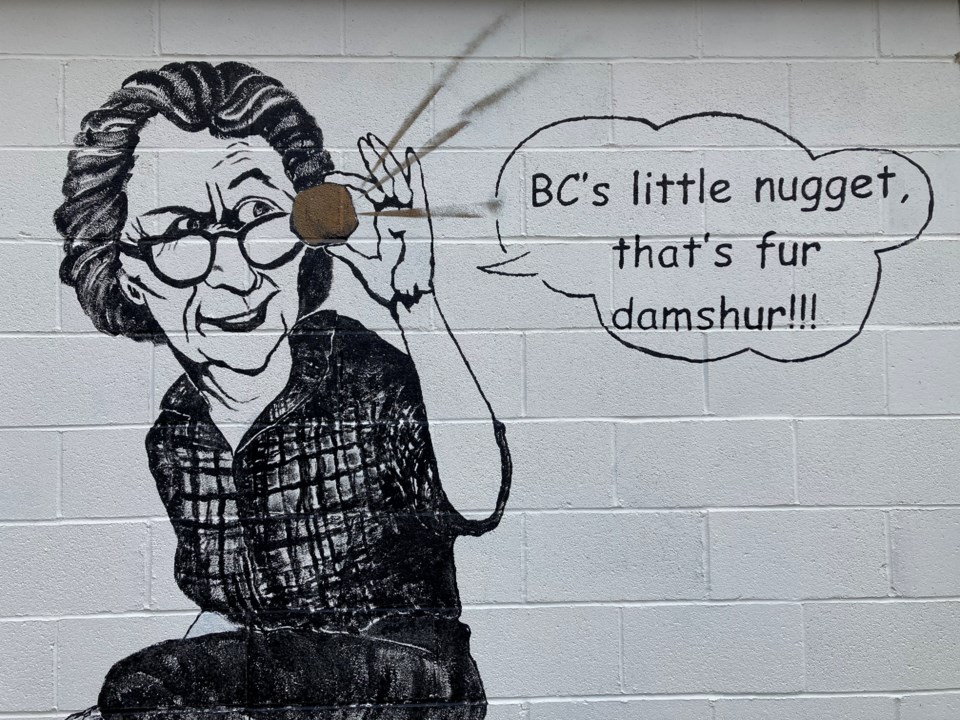How should a journalist introduce themselves to a new community? I’ve been wondering about that as I have pondered what exactly to talk about in my first opinion piece for Pique Newsmagazine.
Do you start with an introduction, talking about yourself and your aspirations? Or do you try and give your opinion on the controversial topics in the region, like the housing crisis, transit strikes or if it’s The Longhorn or Longies? (I’m team Longies by the way.)
It’s a hard thing to think about when you’re brand new to a region. I’ve been in Whistler for a little over three weeks now, and I’m not sure that is enough time to really have a reasonable opinion on any of the issues in the Sea to Sky.
What did the famous British Columbian journalists that came before me talk about in their first opinion pieces?
How did the likes of Jack Webster, Amor De Cosmos or Margaret (Ma) Murray introduce themselves to their communities?
That is the goal, after all—to follow in the footsteps of characters like Jack Webster and Ma Murray. Both of them gained a reputation for their sharp tongues and a style of storytelling that was so legendary it led to awards being named after them (awards, by the way, that Pique has won many of over the years).
Ma Murray especially is one such journalist that I have been thinking about. With the community newspaper awards named after her coming up on May 14 and my recent move from my hometown of Kamloops to Whistler passing through her beloved Lillooet, I can’t help but wonder how a journalist can rise to such a position in a community that people will paint murals of you on the sides of buildings.
For those that don’t know of Ma Murray, she is a legendary figure in British Columbia journalism, and founded the Bridge River-Lillooet News alongside her boss-turned-lover George Murray, who served as Lillooet’s MLA for eight years from 1933 to 1941.
For six decades, she typed out, on an actual typewriter, the news of the day and her opinion along with it. She had a parlance for the comedic that was so good it “guaranteed a chuckle every week and a belly laugh once a month or your money back.” Considering Pique is a free paper, I could give the same guarantee!
Murray’s writings were riddled with grammatical mistakes and an inclination toward the eccentric. A 1966 Macleans profile of Murray said she “is like her paper—as gentle as a shotgun and timid as a muleskinner.”
She would often toe the line between being offensive, funny and libellous, sometimes all within the same article. She once referred to Premier W.A.C. Bennett as an old blankety-blank. Yet, despite the name-calling, she was able to gain his endorsement when she ran for the Social Credit Party.
According to Ma Murray: The Story of Canada’s Crusty Queen of Publishing by Stan Sauerwein, on her first night in Lillooet, Murray got into a shouting match with an intoxicated couple who were about to brawl outside her hotel room. She ended up pouring water on the drunks’ heads. Now that is one hell of a way to make an impression on a town.
Murray’s first editorial didn’t even have anything to do with Lillooet, but instead was about whether or not Gold Bridge should allow brothels that had been set up during the rapid construction of the gold rush town.
In her opinion, the brothels should stay. “If you want them to move, let’s get in and help them move. Allow them uptown on mail days to shop. Stop harassing them,” Murray wrote.
“After all, Gold Bridge was happy enough to sell them lots and lumber for their houses. They don’t bother anybody. And it’s fine to adjust your rose-coloured glasses and say these houses shouldn’t exist. But until 600 single men in this valley can build themselves homes and bring wives and families here, you may as well relax and face the fact that sporting houses are necessary to the safety of the women who do live here.”
Murray didn’t bother with a lousy introduction letter. She jumped straight into the fight—one of the most controversial issues she could find and went all in. It was an opinion that won her no favours with the church folk, but it certainly made a few of the miners happy, and the miners bought the paper.
Creating an opinion piece in the modern day is fit with the same divides—one group may love what you say while another will want to throw you out of town. The brothels eventually shut down in Gold Bridge, along with most of the town, and an issue that once dominated the conversation has been relegated to the history books.
An opinion on today’s news could influence things to come a hundred years in the future or could end up being just a footnote in the history books. With each editorial, Murray would sign off with her trademark “and that’s fer damshur!”
Now that’s the way to end an opinion piece—a catchphrase! I don’t have a catchphrase yet, so I’ll just end this one by saying, thanks for the warm welcome Whistler. So far it’s been great.




